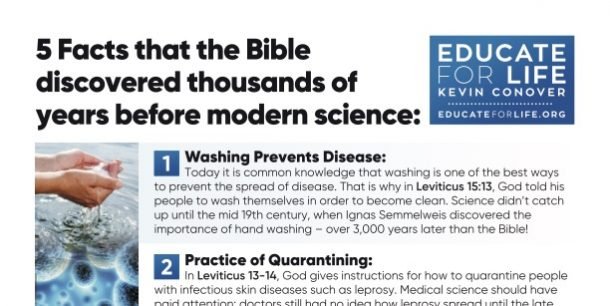Tuesday, July 02, 2013
By Timothy J. Dailey, Ph.D.
This article was originally published by the Family Research Council in 2002.

A POLITICAL AGENDA: REDEFINING MARRIAGE
It is not the intention of homosexual activists simply to make it possible for homosexuals and lesbians to partake of conventional married life. By their own admission they aim to change the essential character of marriage, removing precisely the aspects of fidelity and chastity that promote stability in the relationship and the home:
Paula Ettelbrick, former legal director of the Lambda Legal Defense and Education Fund, has stated, “Being queer is more than setting up house, sleeping with a person of the same gender, and seeking state approval for doing so. . . . Being queer means pushing the parameters of sex, sexuality, and family, and in the process transforming the very fabric of society.”61
According to homosexual writer and activist Michelangelo Signorile, the goal of homosexuals is: “To fight for same-sex marriage and its benefits and then, once granted, redefine the institution of marriage completely, to demand the right to marry not as a way of adhering to society’s moral codes but rather to debunk a myth and radically alter an archaic institution…The most subversive action lesbian and gay men can undertake…is to transform the notion of ‘family’ entirely.”62
Signorile goes so far as to redefine the term monogamy: “For these men the term ‘monogamy’ simply doesn’t necessarily mean sexual exclusivity…The term ‘open relationship’ has for a great many gay men come to have one specific definition: A relationship in which the partners have sex on the outside often, put away their resentment and jealousy, and discuss their outside sex with each other, or share sex partners.63
The views of Signorile and Ettelbrick regarding marriage are widespread in the homosexual community. According to the Mendola Report, a mere 26 percent of homosexuals believe that commitment is most important in a marriage relationship.64
Former homosexual William Aaron explains why even homosexuals involved in “committed” relationships do not practice monogamy: “In the gay life, fidelity is almost impossible. Since part of the compulsion of homosexuality seems to be a need on the part of the homophile to ‘absorb’ masculinity from his sexual partners, he must be constantly on the lookout for [new partners]. Consequently the most successful homophile ‘marriages’ are those where there is an arrangement between the two to have affairs on the side while maintaining the semblance of permanence in their living arrangement.”65
Even those who support the concept of homosexual “families” admit to their unsuitability for children:
In their study in Family Relations, L. Koepke et al. observed, “Even individuals who believe that same-sex relationships are a legitimate choice for adults may feel that children will suffer from being reared in such families.”66
Writing in the Journal of Homosexuality, J. J. Bigner and R. B. Jacobson describe the homosexual father as “socioculturally unique,” trying to take on “two apparently opposing roles: that of a father (with all its usual connotations) and that of a homosexual man.” They describe the homosexual father as “both structurally and psychologically at social odds with his interest in keeping one foot in both worlds: parenting and homosexuality.”67
In truth, the two roles are fundamentally incompatible. The instability, susceptibility to disease, and domestic violence that is disproportionate in homosexual and lesbian relationships would normally render such households unfit to be granted custody of children. However, in the current social imperative to rush headlong into granting legitimacy to the practice of homosexuality in every conceivable area of life, such considerations are often ignored.
But children are not guinea pigs to be used in social experiments in redefining the institution of marriage. They are vulnerable individuals with vital emotional and developmental needs. The great harm done by denying them both a mother and a father in a committed marriage will not easily be reversed, and society will pay a grievous price for its ill-advised adventurism.
CHILDREN NEED A MOM AND A DAD
Attempts to redefine the very nature of the family ignore the accumulated wisdom of cultures and societies from time immemorial, which testifies that the best way for children to be raised is by a mother and father who are married to each other. The importance of the traditional family has been increasingly verified by research showing that children from married two-parent households do better academically, financially, emotionally, and behaviorally. They delay sex longer, have better health, and receive more parental support.68
Homosexual or lesbian households are no substitute for a family: Children also need both a mother and a father. Blankenhorn discusses the different but necessary roles that mothers and fathers play in children’s lives: “If mothers are likely to devote special attention to their children’s present physical and emotional needs, fathers are likely to devote special attention to their character traits necessary for the future, especially qualities such as independence, self-reliance, and the willingness to test limits and take risks.”
Blankenhorn further explains:
“Compared to a mother’s love, a father’s love is frequently more expectant, more instrumental, and significantly less conditional. . . . For the child, from the beginning, the mother’s love is an unquestioned source of comfort and the foundation of human attachment. But the father’s love is almost a bit farther away, more distant and contingent. Compared to the mother’s love, the father’s must frequently be sought after, deserved, earned through achievement.”69
Author and sociologist David Popenoe confirms that mothers and fathers fulfill different roles in their children’s lives. In Life without Father Popenoe notes, “Through their play, as well as in their other child-rearing activities, fathers tend to stress competition, challenge, initiative, risk taking and independence. Mothers in their care-taking roles, in contrast, stress emotional security and personal safety.”
Parents also discipline their children differently: “While mothers provide an important flexibility and sympathy in their discipline, fathers provide ultimate predictability and consistency. Both dimensions are critical for an efficient, balanced, and humane child-rearing regime.”70
The complementary aspects of parenting that mothers and fathers contribute to the rearing of children are rooted in the innate differences of the two sexes, and can no more be arbitrarily substituted than can the very nature of male and female. Accusations of sexism and homophobia notwithstanding, along with attempts to deny the importance of both mothers and fathers in the rearing of children, the oldest family structure of all turns out to be the best.
In his analysis of human cultures, the eminent Harvard sociologist Pitirim Sorokin argued that no society has ceased to honor the institution of marriage and survived. Sorokin considered traditional marriage and parenting as the fulfillment of life’s meaning for both individuals and society: “Enjoying the marital union in its infinite richness, parents freely fulfill many other paramount tasks. They maintain the procreation of the human race. Through their progeny they determine the hereditary and acquired characteristics of future generations. Through marriage they achieve a social immortality of their own, of their ancestors, and of their particular groups and community. This immortality is secured through the transmission of their name and values, and of their traditions and ways of life to their children, grandchildren, and later generations.”71
In the 1981 Apostolic Exhortation Familiaris Consortio, Pope John Paul II summarized the importance of marriage-based families: “The family has vital and organic links with society since it is its foundation and nourishes it continually through its role of service to life: It is from the family that citizens come to birth and it is within the family that they find the first school of the social virtues that are the animating principle of the existence and development of society itself.”72
None of this is possible in homosexual or lesbian households, which are by definition incapable of creating progeny and contributing to the “procreation of the human race.” Any children found in such households are of necessity obtained either from married couples or otherwise through the sexual union of male and female, artificially or otherwise. Thus such households are ironically dependent upon the very womb of society—the union of male and female—that they wish so fervently to deny. In It Takes a Village, Hillary Rodham Clinton refers, perhaps inadvertently, to indelible “laws of nature” when she observes that “every society requires a critical mass of families that fit the traditional ideal.” Similarly, an organism needs a critical mass of healthy cells to survive, and—as every oncologist knows—the fewer abnormal cells the better.
In a democratic society, those who choose to cohabit in “alternative” familial arrangements such as same-sex unions have the freedom to do so. But toleration is one thing; promotion and “celebration” are another. To entrust children to such arrangements is wholly beyond the pale. As history shows, a society that champions such unions at the expense of traditional families does so at its own peril. But with the formidable forces of nature, culture, and history arrayed against them, such efforts to remake the most fundamental institution of society are not likely, in the end, to prevail.
ENDNOTES
61 Paula Ettelbrick, quoted in William B. Rubenstein, “Since When Is Marriage a Path to Liberation?” Lesbians, Gay Men, and the Law, (New York: The New Press, 1993), pp. 398, 400.
62 Michelangelo Signorile, “Bridal Wave,” Out, December 1994.
63 Michelangelo Signorile, Life Outside (New York: HarperCollins, 1997), p. 213.
64 Mary Mendola, The Mendola Report (New York: Crown, 1980), p. 53.
65 William Aaron, Straight (New York: Bantam Books, 1972), p. 208, cited by Joseph Nicolosi in Reparative Therapy of Male Homosexuality, p. 125, quoted by Robert H. Knight in “How Domestic Partnerships and ‘Gay Marriage’ Threaten the Family,” Family Research Council, Insight, June 1994, p. 9.
66 L. Koepke et al., “Relationship Quality in a Sample of Lesbian Couples with Children and Child-free Lesbian Couples,” Family Relations 41 (1992): 228.
67 Bigner and Jacobson, “Adult Responses to Child Behavior and Attitudes Toward Fathering,” pp. 174, 175.
68 See the following: Sara McLanahan and Gary Sandfeur, Growing Up with a Single Parent: What Hurts, What Helps (Cambridge: Harvard University Press, 1994), p. 45; Pat Fagan, “How Broken Families Rob Children of Their Chances for Prosperity,” Heritage Foundation Backgrounder No. 1283, June 11, 1999, p. 13; Dawn Upchurch et al., “Gender and Ethnic Differences in the Timing of First Sexual Intercourse,” Family Planning Perspectives 30 (1998): 121–127; Jeanne M. Hilton and Esther L. Devall, “Comparison of Parenting and Children’s Behavior in Single-Mother, Single-Father, and Intact Families,” Journal of Divorce and Remarriage 29 (1998): 23–54; Jane Mauldon, “The Effect of Marital Disruption on Children’s Health,” Demography 27 (1990): 431–446; Frank Furstenberg, Jr., and Julien Teitler, “Reconsidering the Effects of Marital Disruption: What Happens to Children of Divorce in Early Adulthood?” Journal of Family Issues 15 (June 1994); Elizabeth Thomson et al., “Family Structure and Child Well-Being: Economic Resources vs. Parental Behaviors,” Social Forces 73 (1994): 221–42.
69 David Blankenhorn, Fatherless America (New York: Basic Books, 1995), p. 219.
70 David Popenoe, Life Without Father (Cambridge: Harvard University Press, 1996), pp. 144, 146.
71 Pitirim Sorokin, The American Sex Revolution (Boston: Porter Sargent Publishers, 1956), pp. 6, 77–105.
72 John Paul II, Apostolic Exhortation, Familiaris Consortio, December 15, 1981, Section 42. Quoted by Robert H. Knight in “Gay ‘Marriage’: Hawaii’s Assault on Matrimony,” Family Policy, February 1996, p. 5.


Trackbacks/Pingbacks